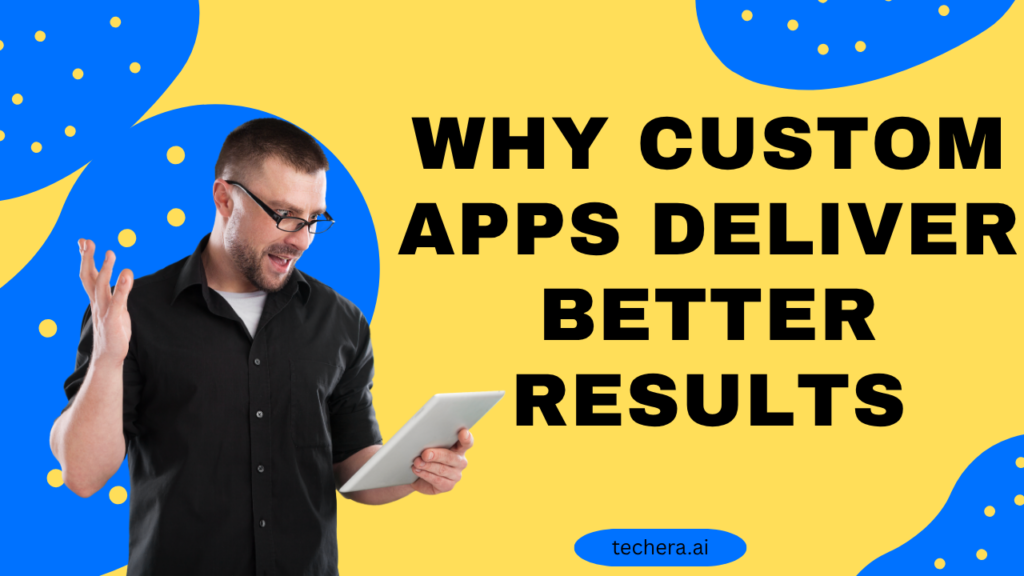
Discover the key steps to building powerful and result-driven applications with Custom Web App Development. This blog post explores essential strategies, tools, and best practices to help businesses create tailored web apps that align with their goals, enhance user experience, and drive measurable success.
Introduction
You can’t afford to blend in. In today’s digital-first world, businesses need more than a basic online presence—they need powerful, results-driven solutions. Custom Web App Development can help with that. It’s the key to creating apps that actually work for your business.
Understanding Custom Web App Development
What Is Custom Web App Development?
It’s the process of building web applications tailored specifically to your business processes, users, and goals. Unlike plug-and-play solutions, custom apps are designed from the ground up to meet your unique requirements.
Difference Between Custom and Off-the-Shelf Apps
Off-the-shelf apps are like fast food: quick, cheap, and generic. Custom web apps? They’re gourmet meals—crafted with care, ingredients chosen just for you. While templates might offer short-term solutions, they lack the depth and flexibility of custom builds.
Why Custom Apps Deliver Better Results

Alignment With Business Goals
Your KPIs are taken into consideration while creating custom apps. Whether you’re aiming for better workflow, user engagement, or sales conversions—customization ensures your app hits those targets.
Improved Performance and UX
A tailored backend and optimized frontend mean faster load times, smoother navigation, and happier users. And when users are happy, results follow.
Long-Term Scalability
As your business grows, so should your app. Custom development allows you to add features, integrate new tools, and scale infrastructure effortlessly.
Planning Your Custom Web App
Identify Your Business Needs
Start by answering: What problem is this app solving? Whether it’s streamlining internal operations or improving customer engagement, clarity here is critical.
Define KPIs and Success Metrics
Don’t build in the dark. Define success early—think bounce rate, user retention, sales, or productivity gains.
Conduct Market Research
Check out competitors and see what’s working (or not) in your industry. Your app should do what theirs can’t.
Choosing the Right Development Team
In-House vs Outsourcing
In-house teams offer better alignment but higher costs. Flexibility and access to worldwide talent are two benefits of outsourcing, but make informed decisions.
Vetting Experience and Technical Skills
Ask for portfolios, case studies, and tech expertise. Choose a team that understands your vision and has the tools to build it.
Importance of Communication and Transparency
It is impossible to compromise on regular updates, precise deadlines, and open communication. Great communication = great results.
Designing for Results
UX/UI That Converts
It’s not just about looking good. Effective design guides users to action—signing up, buying, clicking. Use intuitive layouts, engaging visuals, and CTAs.
Mobile-First and Responsive Design
Most users access apps from their phones. Your app will look and work flawlessly on all devices thanks to responsive design.
Accessibility and Usability
Design for everyone—including those with disabilities. Make use of readable fonts, keyboard navigation, and alt messages.
Also Read : The Advantages of Choosing Custom Web App Development Over Template-Based Solutions
Development Process Step-by-Step
Wireframes and Prototypes
Sketch your ideas before coding. This phase helps define flow, layout, and core functionality—saving time and money later.
Agile Development Cycles
Break the build into sprints. Agile lets you test, improve, and adapt on the fly—making sure you’re always moving toward the right goal.
Testing, QA, and Iteration
No app launches bug-free. Conduct rigorous tests: unit, functional, integration, and user testing before going live.
Tech Stack Essentials
Frontend Tools
Use frameworks like React, Vue, or Angular to create fast, dynamic interfaces.
Backend Technologies
Node.js, Laravel, Django, or Ruby on Rails—choose what aligns with your performance, scalability, and security needs.
Database & Hosting Options
Pick between MongoDB, PostgreSQL, or Firebase based on your app’s data structure. Host on AWS, Azure, or DigitalOcean for robust performance.
Integrations That Enhance Value
CRM and ERP Systems
Link your app with systems like Salesforce, HubSpot, or SAP to streamline data flow and customer management.
Payment Gateways and APIs
Add functionality with APIs—from payment processors like Stripe and PayPal to tools like Google Maps or Twilio.
Launching Your Web App
Pre-Launch Checklist
Test everything. Validate user flows, speed, responsiveness, and security. Prepare a rollback strategy in case it becomes necessary.
User Onboarding and Support
Guide users with tutorials, walkthroughs, and support channels. Make that first impression count.
Post-Launch Optimization
Gathering Feedback
Encourage users to share feedback. It’s the goldmine for your next update.
Data-Driven Updates
Use analytics to track user behavior. Optimize based on real data, not guesses.
Common Mistakes to Avoid
Ignoring Scalability
Your app might be perfect now, but can it handle 10x the users next year?
Lack of User Testing
You’re not your user. Ask actual people to test and provide candid feedback.
Skipping Security Measures
Protect your app and users with SSL, data encryption, and secure authentication protocols.
Real Examples of Web Apps That Deliver Results

Productivity Tools
Apps like Notion and Trello started small and grew into must-haves—thanks to smart custom development and real user value.
eCommerce Platforms
Think Shopify or Big Commerce—robust platforms built to scale, adapt, and dominate markets.
Conclusion
Custom web app development isn’t just a trend—it’s a strategic decision. It allows your business to stand out, solve real problems, and deliver tangible results. While templates may seem convenient, only custom solutions give you the flexibility, performance, and control you need to truly succeed.
Frequently Asked Question
Q. How much time does it take to create a unique web application?
A. It can take 2–12 months depending on complexity, features, and team size.
Q. Is custom development only for large businesses?
A. Not at all. Startups and small businesses can benefit hugely—especially with scalable, phased development.
Q. What’s the cost of a custom web app?
A. Typically ranges from $10,000 to $100,000+, based on scope and features.
Q. Can I integrate third-party tools into a custom app?
A. Yes! Custom apps are great at integrating APIs, CRMs, payment gateways, and more.
Q. How do I choose a development team?
A. Look for relevant experience, strong portfolios, great communication, and a clear development process.

